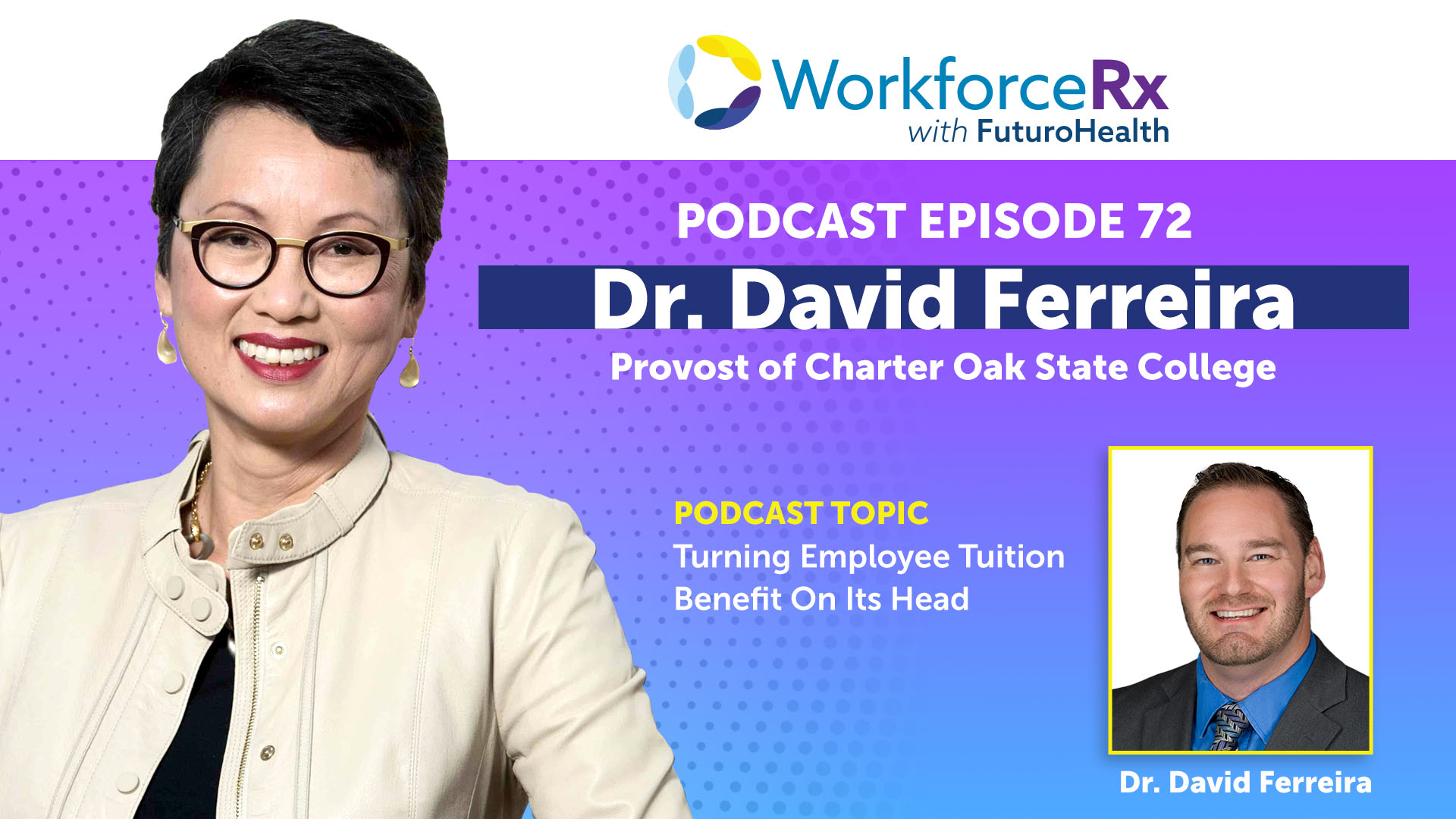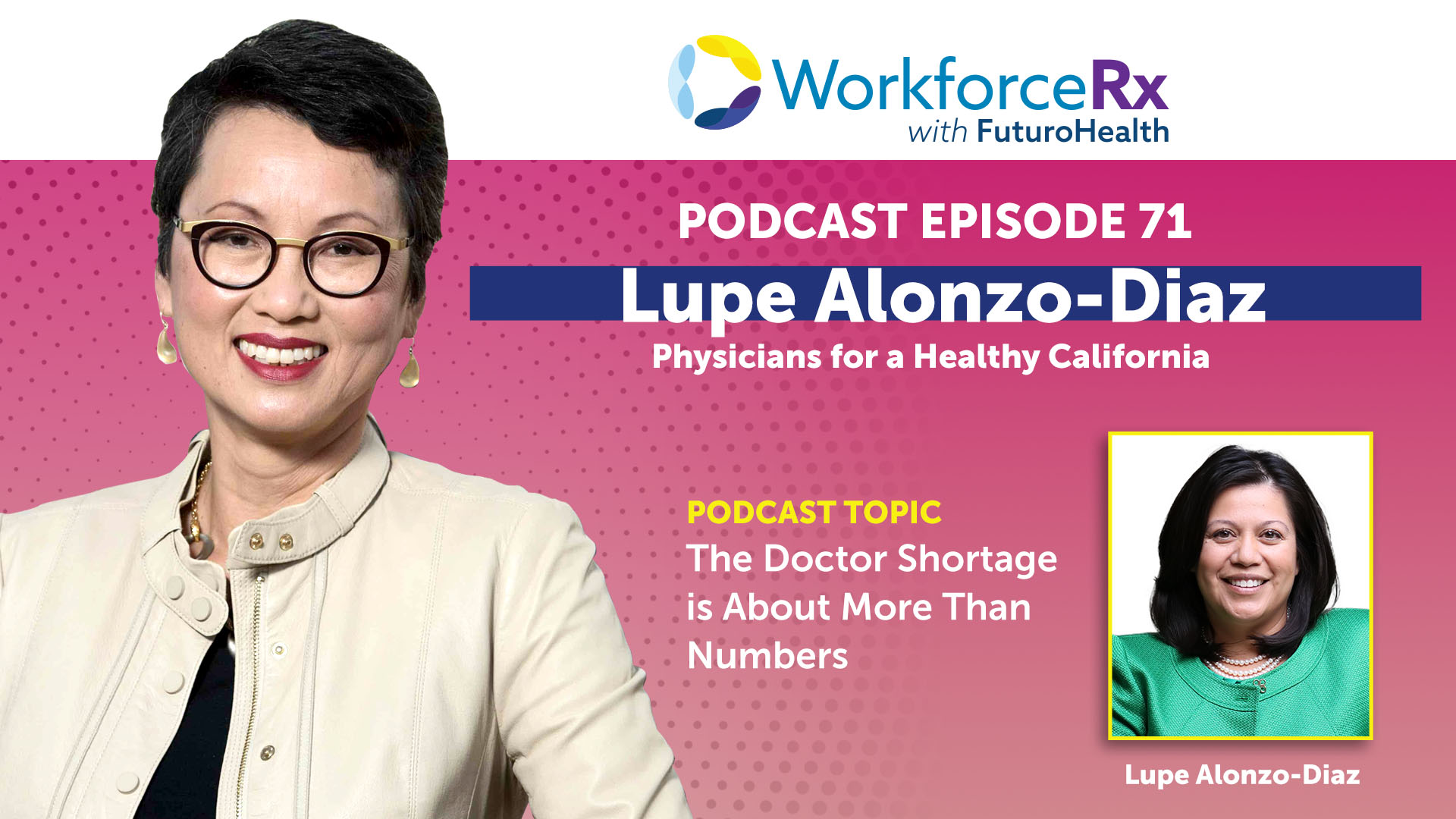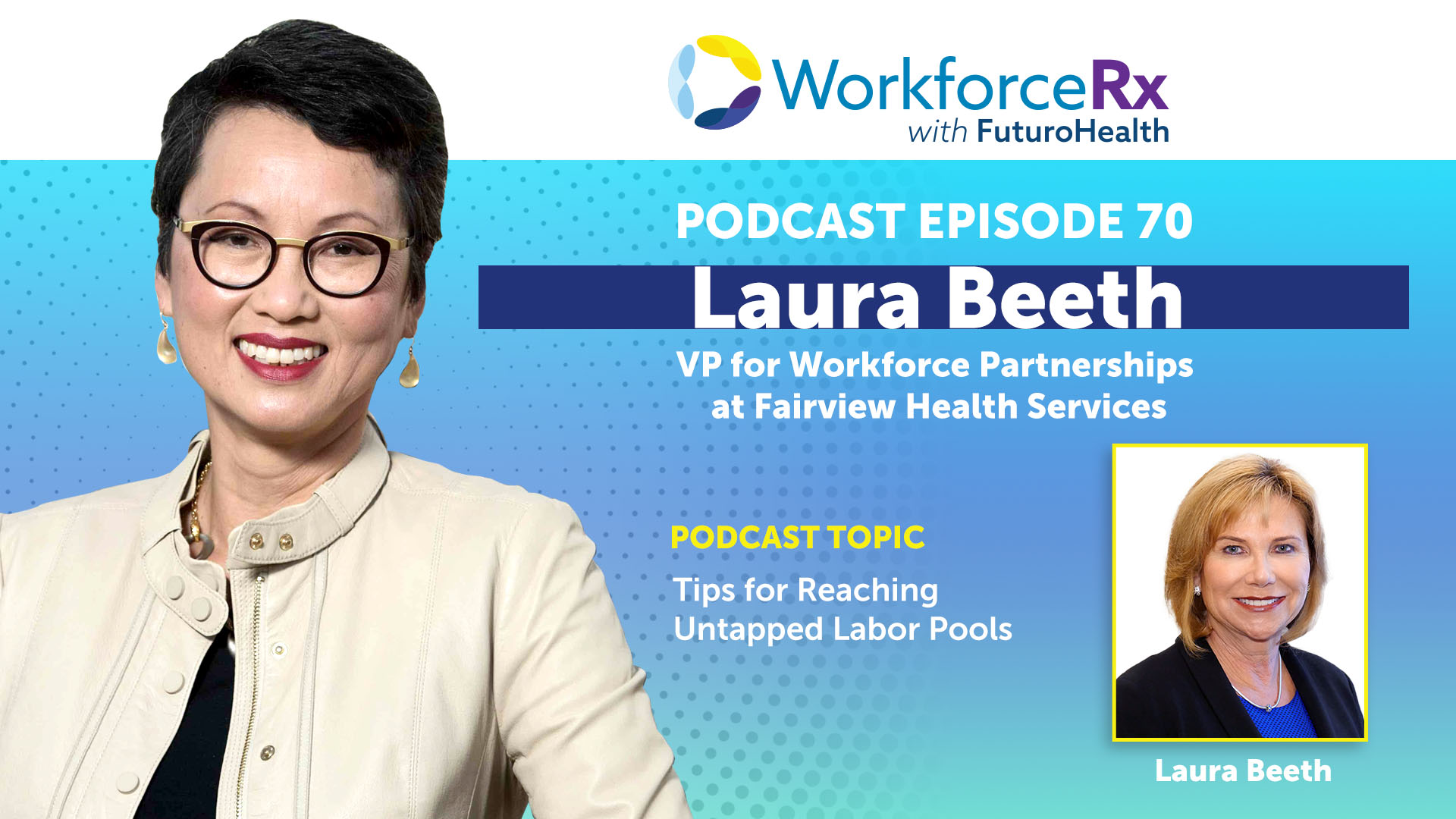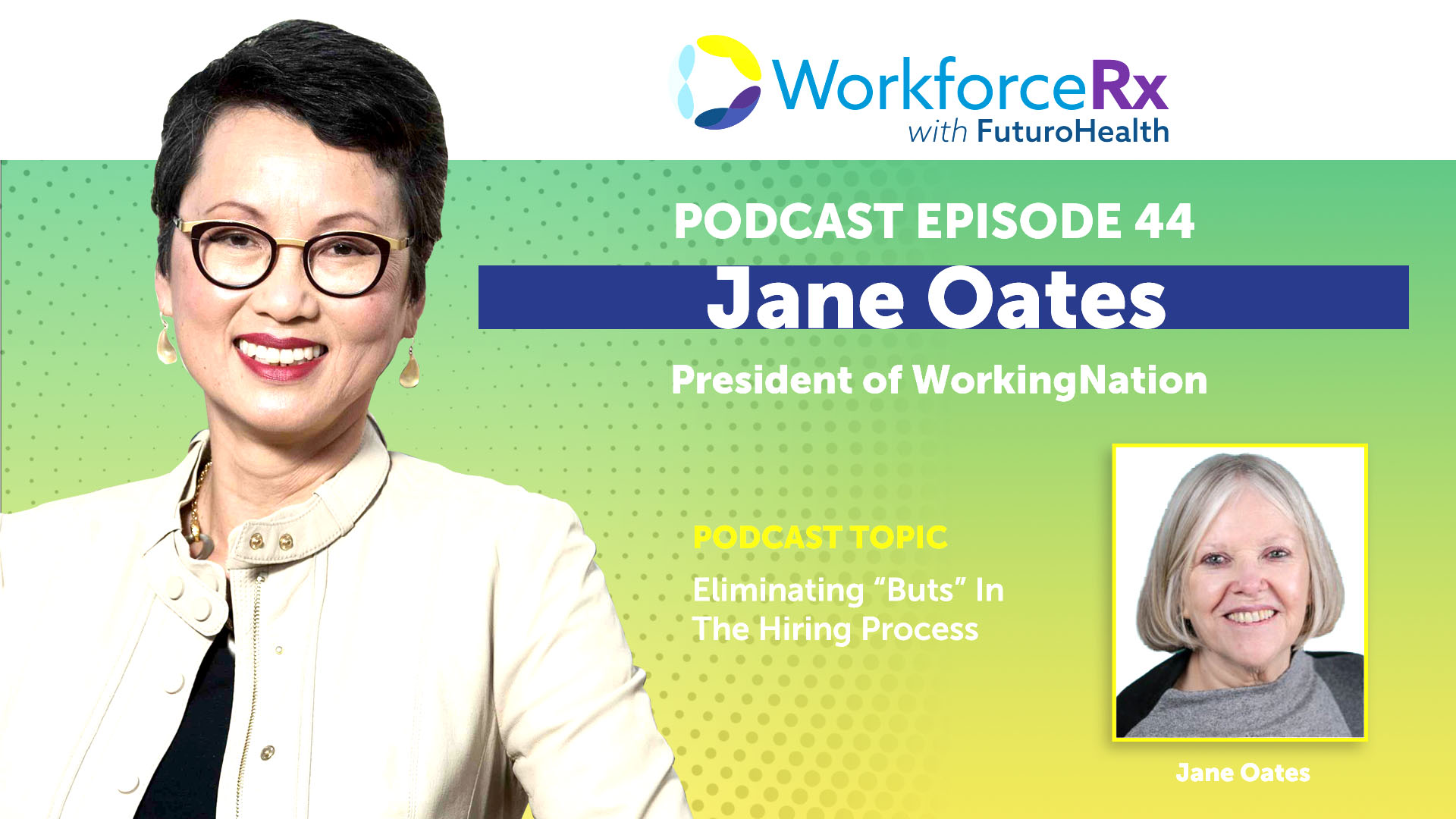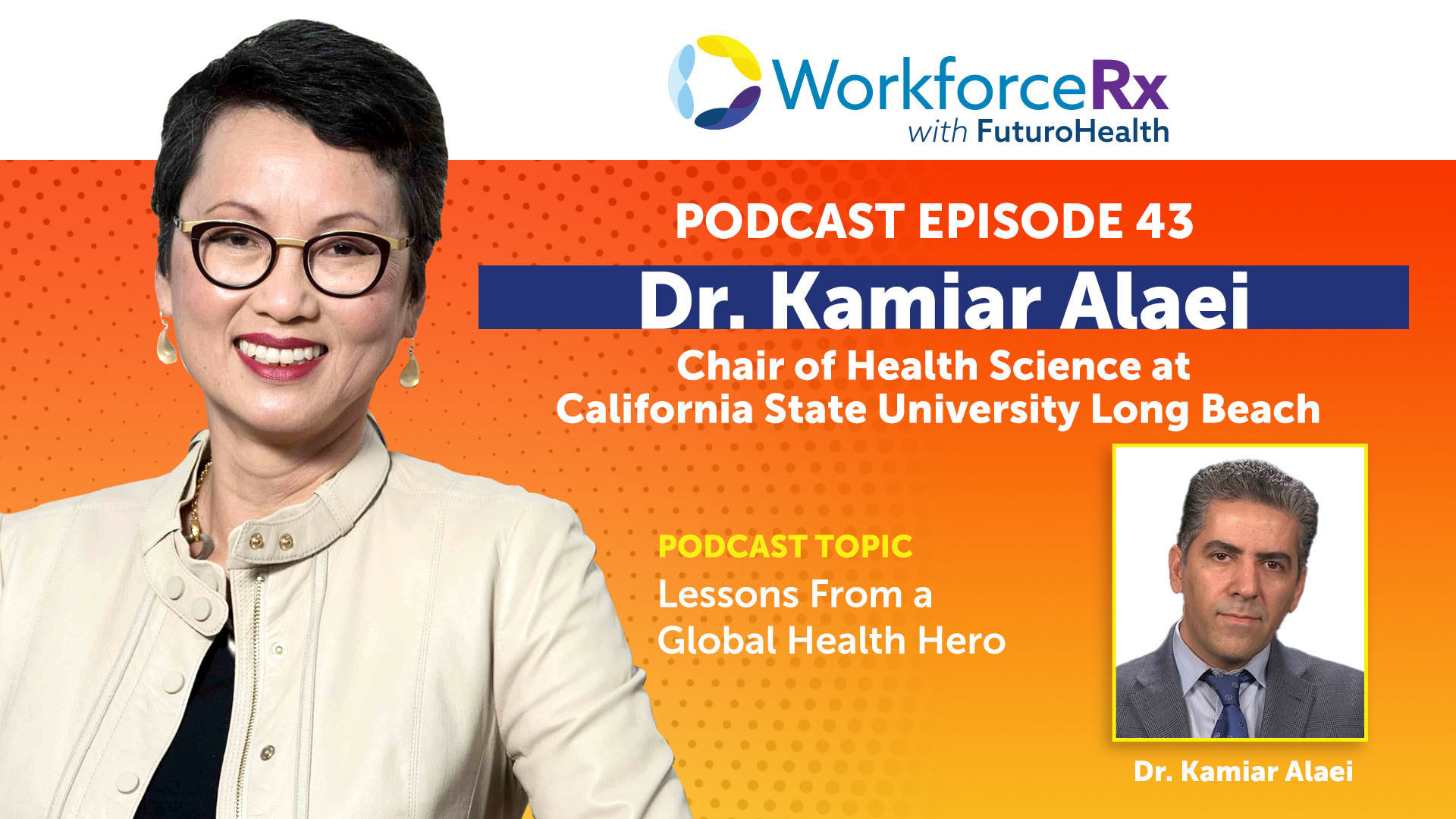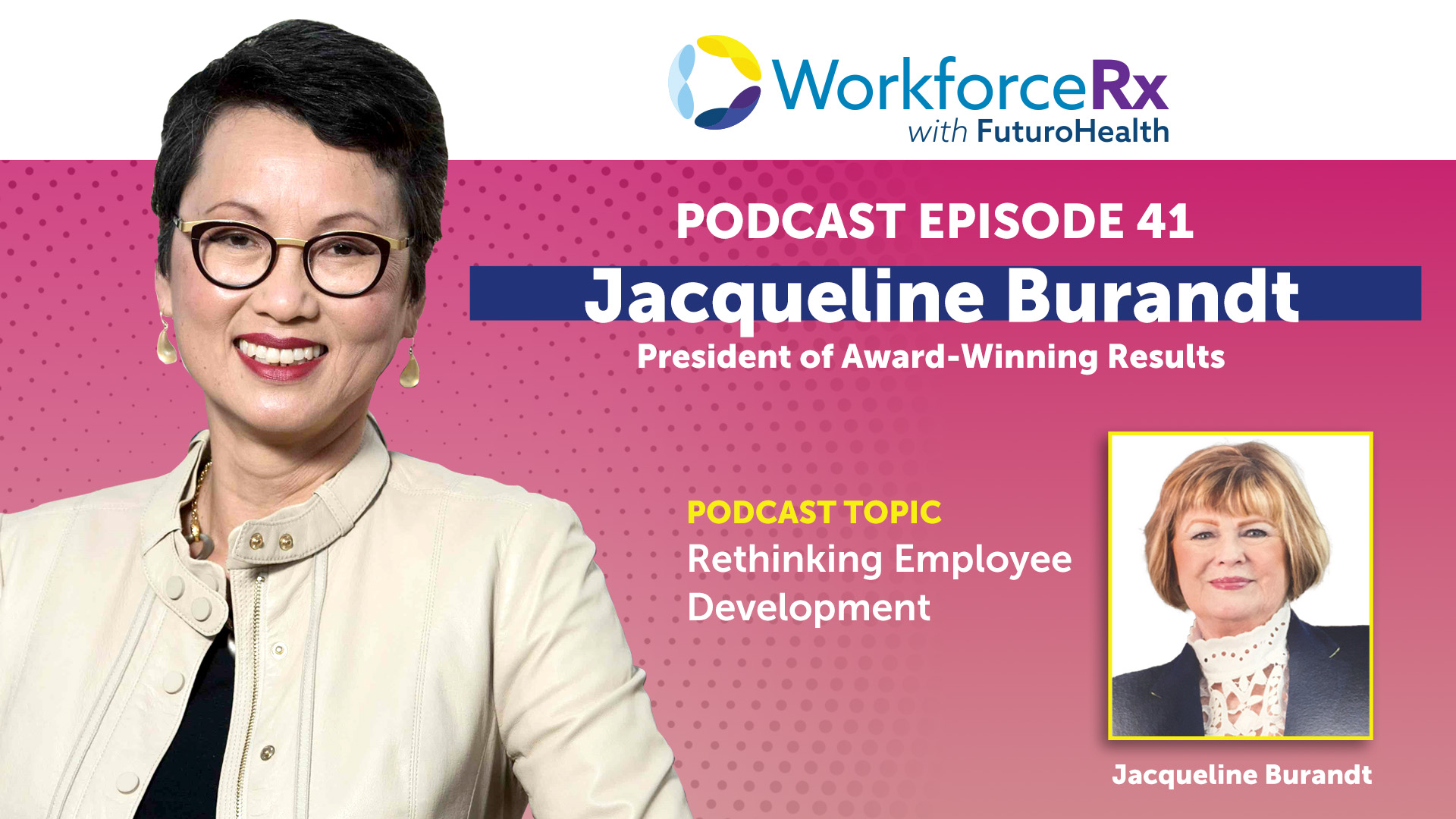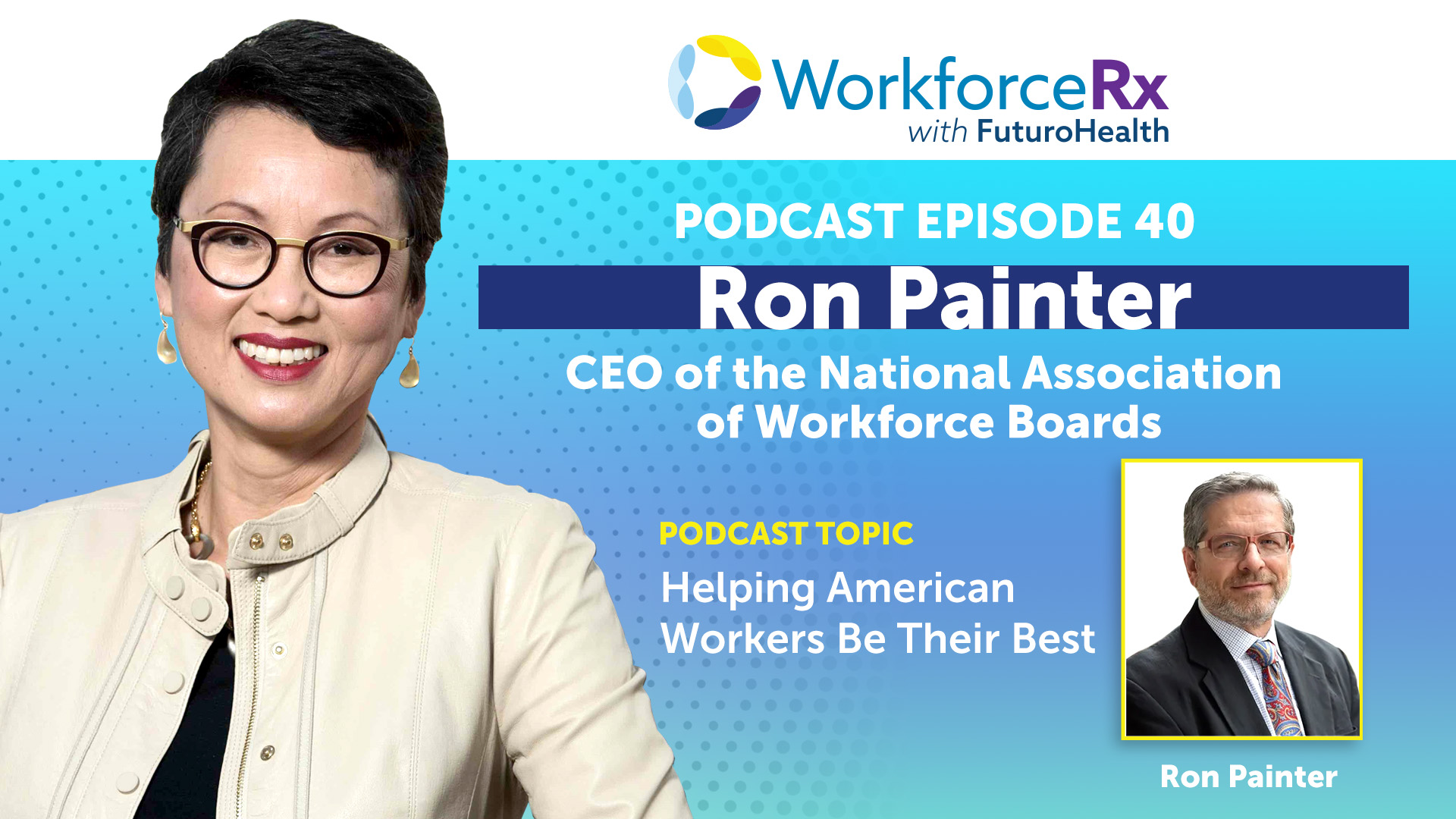Although most US employers offer some form of tuition assistance, it’s estimated that less than 5% of employees use the benefit. There are several reasons for this, but according to Dr. David Ferreira, provost of Charter Oak State College, paying the upfront cost of tuition is high on the list. “Fifty-seven percent of Americans have less than $1,000 in their savings account. They cannot commit to an upfront tuition cost especially if they’re living paycheck to paycheck,” he tells Futuro Health CEO Van Ton-Quinlivan. Inspired by an idea outlined in Van’s book WorkforceRx: Agile and Inclusive Strategies for Employers, Educators and Workers in Unsettled Times, Ferreira and colleagues decided to turn the traditional tuition reimbursement model on its head and adopt a disbursement model instead in which employers pay the upfront cost and get reimbursed through a federal tax credit for employee tuition benefits. He calls it a ‘win-win-win’ approach. “There’s no money out of pocket for the employee, there’s no cost on the employer side because they’ll be reimbursed, and Charter Oak is going to get more students.” In working to sign-up employers as the new Charter Invest program rolls out, Ferreira is also highlighting that it will help companies with the important goals of employee retention and diversifying their workforce. Get all the details, learn about the program’s ‘all you can eat’ design, and find out how employers are reacting to the idea in this eye-opening conversation.
Continue readingLupe Alonzo-Diaz, Physicians for a Healthy California: The Doctor Shortage Is About More Than Numbers
Like all states, California is facing a shortage of physicians — in its case a gap of 10,500 by the end of the decade — but today’s WorkforceRx guest says the definition of shortage needs to go beyond just numbers to include their practice location and cultural diversity. “Oftentimes, we don’t have enough access to physicians in particular areas or to culturally dynamic physicians,” says Lupe Alonzo-Diaz, president and CEO of Physicians for a Healthy California. As she explains to Futuro Health CEO Van Ton-Quinlivan, PHC tackles the issue by expanding physician training opportunities in underserved areas and by incentivizing early career physicians and dentists to accept Medicaid patients through loan forgiveness. “Those physicians come from geographically underserved communities. They also speak a second language and they’re committed to staying in those communities after they finish their service obligation.” This engaging conversation also explores addressing social determinants of health, trends in team-based care and previews a new report on how physicians who are women of color fared during the pandemic. “Women physicians of color are such a key core component to how we deliver culturally dynamic quality care and we need them to stay in their profession and continue to advance.”
Continue readingLaura Beeth, VP for Workforce Partnerships at Fairview Health Services: Tips for Reaching Untapped Labor Pools
In the struggle to fill ongoing gaps in healthcare staffing, the days of waiting for people to apply for openings are over, says human resources veteran Laura Beeth. “We’re going out deeply into the communities, especially communities with high social determinants of health, and really working partnerships to help them move into healthcare careers,” says the vice president for Workforce Partnerships at Fairview Health Services, which is the second largest private employer in Minnesota. Beeth tells Futuro Health CEO Van Ton-Quinlivan that hiring officials need to start meeting people where they are at in their careers instead of passing them over if they don’t meet all of the specific qualifications. “There is space for everyone. Let’s figure out if it’s a perfect match. If not, let’s find out what they can do in our organization. That’s the kind of flexible mindset we need.” This conversation is loaded with useful strategies and insights on leveraging learn-and-earn programs, re-credentialing new Americans with healthcare backgrounds, reducing employee education costs, building employee loyalty and diversifying your workforce. Tune in for a valuable dose of hard-earned wisdom from the woman known as ‘the godmother of healthcare workforce development.’
Continue readingDr. Tom Mitchell, Carnegie Mellon University: The Impact of AI on the Future Workforce
When it comes to the impact of artificial intelligence on the workforce, there is still a major split between those who worry about “robots” replacing workers, and those who think employees will benefit from AI if it is harnessed the right way. On this episode of WorkforceRx, Futuro Health CEO Van Ton-Quinlivan asks one of the world’s leading experts in the field, Dr. Tom Mitchell of Carnegie Mellon University, to weigh in on the debate. “The big determinant of how the future of work is going to play out is how we develop these technologies, and how we choose to adopt them. Do we adopt computers as assistants that allow people to do their job better, or do we use them to automate the task? The future is really ours to define.” Mitchell is currently updating a 2017 U.S. National Academy study on AI and the workforce at the request of Congress, and provides us with a peek into what has changed in the intervening years with regard to remote work, online learning, self-driving cars and the speed with which the field of AI itself is changing. Don’t miss this penetrating look at one of the most disruptive technologies of our time.
Continue readingDr. Nader Nadershahi, Chair of the American Dental Education Association: Benefits of Integrating Oral and Medical Care
There’s growing interest in the integration of oral healthcare with medical care, and there’s good reason: about 30 million Americans who visit their dentist annually do not have similar contact with a primary care provider. Our guest on this episode of WorkforceRx, Dr. Nader Nadershahi, says this presents a tremendous opportunity for an additional way to identify problems such as diabetes and heart disease in patients. “The mouth is the window to the rest of your body,” he tells Futuro Health CEO Van Ton-Quinlivan. “The more we bring providers together and put the patient at the center of the conversation to get them the care and the access they need, it’s going to help not only improve healthcare outcomes, but lower our costs of healthcare delivery.” This collaboration will require shifts in how oral healthcare providers are educated, and Nadershahi will have a significant influence on that as Chair of the Board of the American Dental Education Association and Dean of The University of the Pacific Arthur A. Dugoni School of Dentistry. Tune into to find out more about the emerging possibilities of interprofessional practice, the workforce challenges in the field of dentistry, and the future of oral healthcare education.
Continue readingJane Oates, President of WorkingNation: Eliminating “Buts” In The Hiring Process
What would veteran workforce training leader Jane Oates do to improve the hiring system if she had a magic wand? “I would take away all of the buts, as in ‘I would hire you, but you don’t have experience, but you have a disability, but you’re too old.’” It will not only help achieve equal access to employment, she tells Futuro Health CEO Van Ton-Quinlivan, but right now employers could really use a bigger talent pool. “We cannot be the country we are meant to be with a 61% labor market participation rate.” After many years in government service, capped with being Assistant Secretary for Employment and Training in the Obama administration, she’s currently leading WorkingNation, a non-profit focused on educating the public and policymakers about achievable solutions to prepare workers for the future. Among its current initiatives are boosting the employment prospects of veterans, the disabled and single mothers. Partnerships are key to this work, and she and Van will be appearing on a panel together on August 22, 2022 at ASAE: The Center for Association Leadership conference in Nashville to underscore the role associations can play in bringing employers and workforce development stakeholders together. This episode of WorkforceRx is full of interesting ideas and angles to consider for those concerned about closing the troubling gap between job openings and available workers.
Continue readingDr. Kamiar Alaei, Chair of Health Science at California State University Long Beach: Lessons From a Global Health Hero
From building a model HIV/AIDS program in Iran to creating a long-distance program to train doctors in war-torn Syria, Dr. Kamiar Alaei has overcome daunting obstacles to make a broad impact on global health. On this inspiring episode of WorkforceRx he shares lessons learned both in the trenches of public health and the corridors of Harvard, Oxford and other top universities with Futuro Health CEO Van Ton-Quinlivan. Chief among them is the importance of collaboration, which he says requires knowing your audience and being willing to do a ‘dance with partners.’ “I call it a river strategy. In nature, there is no river that goes straight. So, we try to be flexible, while being consistent. In this way, we were able to engage a lot of those who were initially against our initiatives.” The approach allowed him to navigate sensitive religious and cultural barriers in the Middle East, but it also applies to building partnerships in the current federally-funded effort he is leading in California to reshape education for the public health IT workforce, one of only ten such programs in the nation. In fact, one of his partners in that innovative consortium is Futuro Health. Don’t miss this wisdom drop on effective strategies for strengthening public health and the education programs that sustain it from the founding director of the Global Institute for Health and Human Rights, and an internationally celebrated health hero.
Continue readingJohnathan Holifield, Senior Vice President at Bitwise Industries: Opening Economic Opportunities To The Underestimated
Johnathan Holifield spent many years deeply involved in neighborhood and community development work without really moving the needle until he discovered the game-changing nature of the innovation economy. “The stuff we were doing was good work, but we were focused on largely inelastic career opportunities versus what you find in the tech sector and innovation economy, which are elastic opportunities that really give you social and economic mobility.” As senior vice president of New Economies at Bitwise Industries, he’s now in a position to help what he calls disconnected populations gain access to the best options for economic advancement, and do so on an increasingly national scale. Bitwise, which started in Fresno, California in 2013, helps marginalized communities obtain the skills and resources necessary to access opportunities in the tech industry. Apprenticeships are key to its model and Bitwise is now the largest tech apprenticeship provider in the United States. Check out this illuminating episode of WorkforceRx as Futuro Health CEO Van Ton-Quinlivan explores how Bitwise is bringing its successful formula of workforce development, technology consulting and creating great community spaces to seven states and counting.
Continue readingJacqueline Burandt, President of Award-Winning Results: Rethinking Employee Development
Obstacles – from language proficiency to digital literacy to family care – make it difficult for adults to get on, and stay on, an education path towards a career they desire. Our guest on this episode of WorkforceRx, Jacque Burandt, spent decades at University Health System in San Antonio, Texas, breaking down those barriers and is here to share her recipe for creating and sustaining successful upskilling and reskilling programs. As she tells Futuro Health CEO Van Ton-Quinlivan, first and foremost is partnering with community organizations. Very few people have the budget to invest in lots of expensive training so employers should seek out groups that can help them out, says Burandt, who is now president of Award-Winning Results, a firm that focuses on transforming organizations through people development and gaining recognition for employees. A key benefit to these collaborations is that the community partner can often help with the “wraparound” services that make it easier for employees to attend classes. Tune in for many more tips and strategies in this wisdom drop from Jacque about getting the buy-in of supervisors, investing in awareness of the offerings, and the importance of celebrating successes so that building your own internal talent pipeline is no longer just a pipe dream.
Continue readingRon Painter, CEO of the National Association of Workforce Boards: Helping American Workers Be Their Best
As the unprecedented misalignment in the U.S. labor market between employers and workers continues, it’s a good time to take a look at the extensive federal infrastructure in place to support people seeking jobs and skills. Millions of Americans access 2,400 American Job Centers located throughout the country and its territories every year, which are powered by a network of 500 Workforce Development Boards. On today’s episode of WorkforceRx, Futuro Health CEO Van Ton-Quinlivan sits down with Ron Painter, CEO of the National Association of Workforce Boards, to explore the vital role they play in advancing economic opportunity. “Workforce Boards bring together the players you need in that region — housing, transportation, economic development, community-based organizations, faith-based organizations — that’s a unique mix wherever you are. There’s a whole lot that makes that equation work.” Check out this informative discussion to learn how communities are leveraging this network to bring about economic opportunity, why local Boards need more flexibility, and to understand why Painter is optimistic about meeting the unprecedented challenges facing employers and workers.
Continue reading
